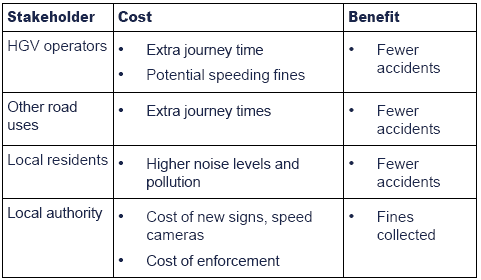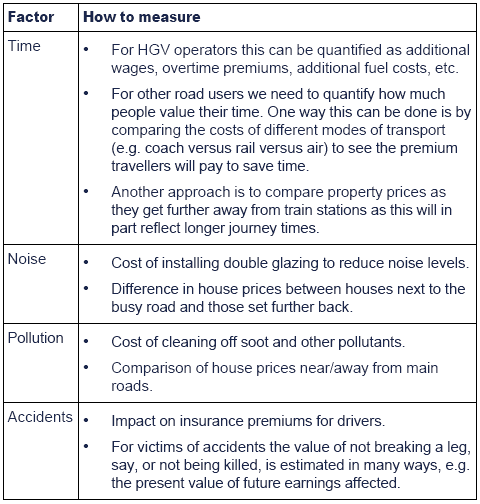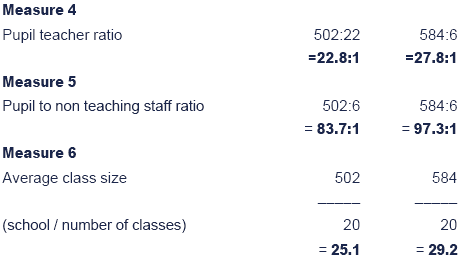Chapter 9: Performance management in not-for-profit organisations
Chapter learning objectives
Upon completion of this chapter you will be able to:
- highlight and discuss the potential for diversity in objectives depending on organisation type
- discuss the need to achieve objectives with limited funds that may not be controllable
- identify and discuss ways in which performance may be judged in not-for-profit organisations
- discuss the difficulties in measuring outputs when performance is not judged in terms of money or an easily quantifiable objective
- discuss how the combination of politics and the desire to measure public sector performance may result in undesirable service outcomes
- assess 'value for money' service provision as a measure of performance in not-for-profit organisations and the public sector.
1 Exam focus

Student Accountant articles: visit the ACCA website, www.accaglobal.com, to review the following articles on the topics in thischapter:
- Not-for-profit organisations part 1 - September 2009
- Not-for-profit organisations part 2 - October 2009
2 What is a not-for-profit (NFP) organisation?
NFP organisations display the following characteristics:
- Most do not have external shareholders and hence the maximisation of shareholder wealth is not the primary objective.
- They do not distribute dividends.
- Their objectives normally include some social, cultural, philanthropic, welfare or environmental dimension which would not be readily provided in their absence.
When assessing the performance of NFP organisations it is important to include both financial and non-financial measures.
3 Problems associated with performance measurement in NFP organisations
Problem 1: Non-quantifiable costs and benefits
Introduction
Many of the benefits arising from expenditure by these bodies arenon-quantifiable in monetary terms. The same can be true of costs. Thisis because:
- No readily available scale exists.
For example, how to measure the impact of a charity providing a help line to people suffering from depression?
- How to trade off cost and benefits measured in a different way.
For example, suppose funds in a hospital are reallocated to reduce waiting lists (a benefit) but at the expense of the quality of patient care (a cost). Is the time saved enough to compensate for any potential additional suffering?
- Time scale problems.
Benefits often accrue over a long time period and therefore become difficult to estimate reliably. For example, a school may invest in additional sports facilities that will benefit pupils over many decades.
- Externalities.
Suppose a council decides to grant planning permission for new houses to be built. The new residents will increase the number of cars on local roads, resulting in greater congestion and pollution, affecting other residents.

 Illustration 1 - Non-quantifiable costs and benefits
Illustration 1 - Non-quantifiable costs and benefits
Non-quantifiable benefits
In 2001, the British government scrapped admission charges to someof the country's most famous museums and galleries. The policy hasattracted approximately 50 million extra people to the nation's greatartistic and cultural collections. Subjects such as history, art andgeography have been enlivened by being able to go to a museum or galleryand see and touch the exhibitions. However, it is difficult to quantifythe benefits.
Non-quantifiable costs
A hospital has decided to save money by using a cheaper cleaningfirm. However, this decision may create problems in a number of areas:
- It may lead to the spread of infection.
- The general public may lose confidence in the quality of the cleaning.
- Medical staff may become demotivated because they are unable to carry out their work effectively.
However, it is difficult to measure these costs.


 Test your understanding 1
Test your understanding 1
In an attempt to improve people's quality of life the UK governmenthas introduced a range of performance measures to measure quality oflife, including the following:
- the local bird population
- the stock of 'decent' housing
- traffic volumes.
A town planning office is considering whether toapprove a plan to build new houses on farmland. Assess the plan byreference to the three indicators given.

Solution = cost benefit analysis (CBA)
Some NFP organisations, particularly in the public sector, attempt to resolve the above difficulties by quantifying in financial terms all of the costs and benefits associated with a decision.

 Illustration 2 – CBA
Illustration 2 – CBA
Suppose a local government department is considering whether tolower the speed limit for heavy goods vehicles (HGVs) travelling on aparticular road through a residential area. The affected stakeholdersmay be identified as follows:

These costs and benefits then need to be quantified financially.

Once these have been quantified, it is relatively straightforward tocompare overall costs and benefits to see the net impact on society.

Problem 2: Assessing the use of funds
Introduction
Many NFP organisations, particularly public sector organisations,do not generate revenue but simply have a fixed budget for spendingwithin which they have to keep. The funding in public sectororganisations tends to come directly from the government.
There are a number of problems associated with this funding:
- The organisation may feel under pressure to hit government targets rather than focusing on what they would normally consider important.
- There is not necessarily a link between providing more service and obtaining more funds. Funding tends to be limited and may not be controllable.
- A failure to achieve objectives sometimes leads to higher levels of funding.

 Illustration 3 – Funding
Illustration 3 – Funding
An ineffective or inefficient police force will not be closed down, but is likely to justify and obtain additional funding.

Solution = assess value for money
Value for money (VFM) is often quoted as an objective in NFPorganisations, i.e. have they gained the best value from the limitedfunds available?
VFM can be assessed in a number of ways:
- through benchmarking an activity against similar activities in other organisations
- by using performance indicators/ measures (see TYU 2)
- through conducting VFM studies (possibly in conjunction with other institutions)
- by seeking out and then adopting recognised good practice where this can be adapted to the institution's circumstances
- through internal VFM audit work
- through retaining both documents that show how an activity has been planned to build in VFM, and evidence of the good practices adopted
- by examining the results or outcomes of an activity.

 Test your understanding 2
Test your understanding 2
Maple Council is concerned about the performance of St George'sSchool, one of the primary schools within its jurisdiction and, in orderto substantiate this concern, the Council's Education Department hascollected the following information regarding the last two years.


The data has been sent to the council's finance department in which you work for analysis.
Required:
Calculate performance measures for St George's School for each of the last two years.
Based on your calculations analyse the school'sperformance and explain any reservations you may have about their use asmeasures of performance.

The 3Es
Value for money is interpreted as providing an economic, efficient and effective service.
Economy - an input measure. Are the resources the cheapest possible for the quality desired?
Efficiency - here we link inputs and outputs. Is the maximum output being achieved from the resources used?
Effectiveness - an output measure looking at whether objectives are being met.

 Test your understanding 3
Test your understanding 3
Explain the meaning of economy, efficiency andeffectiveness for a university, incorporating specific examples for eachof the 3Es.


 Other methods of evaluating performance
Other methods of evaluating performance
In addition to assessing value for money and the 3Es the followingapproaches can be used to assess the performance of NFP organisations:
- The 'goal approach' looks at the ultimate objectives of the organisation, i.e. it looks at output measures.
For example for a hospital: Have waiting lists been reduced? Have mortality rates gone down? How many patients have been treated?
- The 'systems resources approach' looks at how well the organisation has obtained the inputs it needs to function.
For example, did the hospital manage to recruit all the nurses it needed?
- The 'internal processes approach' looks at how well inputs have been used to achieve outputs – it is a measure of efficiency.
For example, what was the average cost per patient treated?

Problem 3: Multiple and diverse objectives
Diverse objectives
As mentioned, NFP organisations are unlikely to have an objectiveof maximisation of shareholder wealth. Instead they are seeking tosatisfy the particular needs of their members or sections of society,which they have been set up to benefit.

 Illustration 4 - Diverse objectives
Illustration 4 - Diverse objectives
Diverse objectives in NFP organisations include:
- A hospital's objective is to treat patients.
- A council's objective is care for the local community.
- A charity's objective may be to provide relief for victims of a disaster.

Multiple objectives
Multiple stakeholders in NFP organisations give rise to multipleobjectives. This can be problematic when assessing the performance ofthese organisations.
Solution
The problem of multiple objectives can be overcome by prioritising objectives or making compromises between objectives.

 Illustration 5 - The problem of multiple objectives
Illustration 5 - The problem of multiple objectives
A hospital will have a number of different groups of stakeholders, each with their own objectives. For example:
- Employees will seek a high level of job satisfaction. They will also aim to achieve a good work-life balance and this may result in a desire to work more regular daytime hours.
- Patients will want to be seen quickly and will demand a high level of care.
There is potential conflict between the objectives of the twostakeholder groups. For example, if hospital staff only work regulardaytime hours then patients may have to wait a long time if they come tothe hospital outside of these hours and the standard of patient carewill fall dramatically at certain times of the day.
The hospital must prioritise the needs of different stakeholdergroups. In this case, the standard of patient care would be prioritisedabove giving staff the regular daytime working hours that they wouldprefer. However, in order to maintain staff morale an element ofcompromise should also be used. For example, staff may have to workshifts but will be given generous holiday allowances or rewards tocompensate for this.


 Test your understanding 4
Test your understanding 4
Describe the different groups of stakeholders in aninternational famine relief charity. Explain how the charity might haveconflicting objectives and the impact this conflict may have on theeffective operation of the organisation.

Problem 4: The impact of politics on performance measurement
The combination of politics and performance measurement in the public sector may result in undesirable outcomes.
- The public focus on some sectors, such as health and education, make them a prime target for political interference.
- Long-term organisational objectives are sacrificed for short-term political gains.

 Illustration 6 - Impact of politics
Illustration 6 - Impact of politics
Politicians may promise 'increased funding' and 'improvedperformance' as that is what voters want to hear, but it may result inundesirable outcomes.
Increased funding:
- may be available only to the detriment of other public sector organisations
- may be provided to organisations in political hot-spots, not necessarily the places that need more money
- may not be used as efficiently or effectively as it could be
- may only be available in the short-term, as a public relations exercise.
Improved performance:
- may be to the detriment of workers and client's
- may come about as the result of data manipulation, rather than real results
- may be a short-term phenomenon
- may result in more funds being spent on performance measurement when it might better be used on improvements, e.g. hospitals under increasing pressure to compete on price and delivery in some areas may result in a shift of resources from other, less measurable areas, such as towards elective surgery and away from emergency services.


 Test your understanding 5 - Long practice question on NFPOs
Test your understanding 5 - Long practice question on NFPOs
Public versus private sector
The objective of a health authority (a public sector organisation) is stated in its most recent annual report as:
'To serve the people of the region by providing high-quality health care within expected waiting times'.
The 'mission statement' of a large plc in a manufacturing industry is shown in its annual report as:
'In everything the company does, it is committed to creating wealth,always with integrity, for its shareholders, employees, customers andsuppliers and the community in which it operates.'
(a) Discuss the main differences between thepublic and private sectors that have to be addressed when determiningcorporate objectives or missions.
(b) Describe three performance measures whichcould be used to assess whether or not the health authority is meetingits current objective.
(c) Explain the difficulties which public sector organisations face in using such measures to influence decision making.

Question focus: now attempt question 17 from chapter 13.
Chapter summary
Test your understanding answers

 Test your understanding 1
Test your understanding 1



 Test your understanding 2
Test your understanding 2





Comments
In certain circumstances, the schools performance has been fairlyconsistent over the two years. Staff and pupil absences as a percentageof total actual pupil teaching days have deteriorated marginally, whilstactual to possible total teaching days has shown a slight improvement.
The major area of concern is the number of pupils on the schoolroll is roughly 16% higher than last year. This may have an impact onperformance. Pupil to teaching staff, pupil to non teaching staff, andaverage class size has worsened. Whether this is enough to effect thequality of provision is impossible to say without further investigation.
Expenditure per pupil has fallen but this is a function of the increased pupil numbers.
Overall it is not really possible to arrive at a firm conclusionabout the schools performance. This is partly due to a lack of data fromthe school, and partly because of a lack of data from other schoolsagainst which to compare it.


 Test your understanding 3
Test your understanding 3
Value for money for a university would comprise three elements:
Economy - this is about balancing the cost with the qualityof resources. Therefore, it will review areas such as the cost of books,computers and teaching compared with the quality of these resources. Itrecognises that the organisation must consider its expenditure butshould not simply aim to minimise costs, e.g. low cost but poor qualityteaching or books will hinder student performance and will damage thereputation of the university.
Efficiency - this focuses on the efficient use of any resources acquired, for example:
- How often are the library books that are bought by the university taken out by students?
- What is the utilisation of IT resources?
- What % of their working time do academic staff spend lecturing and researching?
Effectiveness - this measures the achievement of the organisation's objectives, for example:
- The % of students achieving a target grade.
- The % of graduates who find full time employment within 6 months of graduating.


 Test your understanding 4
Test your understanding 4
The stakeholders will include donors, people needing aid, voluntarystaff, paid staff, the governments of the countries granting andreceiving aid.
There may be conflicting objectives. Donors and people needing aidwill want all of the funds to be spent on famine relief. Managementstaff may require a percentage of the funds to be spent onadministration and promotion in order to preserve the long-term futureof the charity. Donors may have their own views about how donationsshould be spent which conflict with management staff.
The charity may wish to distribute aid according to perceived need.Governments in receiving countries may have political reasons fordistorting information relating to need. These conflicts may make itdifficult to set clear objectives on which all stakeholders agree.


 Test your understanding 5 - Long practice question on NFPOs
Test your understanding 5 - Long practice question on NFPOs
(a)The main differences between the public and private sector regarding corporate objectives are:
The objectives of a public sector body are usually set out in theAct of Parliament or legal document that brought the body intoexistence. They are therefore difficult to change, even as environmentalconditions change around the body. The directors of a private sectorbody have more freedom in making up the objectives of the company asthey go along, and can change the objectives rapidly in response tochanging conditions.
The value of the output of a private sector body can be easilydetermined in an unbiased way, by looking at the sales revenue achieved.Such numbers can therefore be part of the objectives to be achieved.There is no easy way for determining the economic value of the output ofa public sector body; placing a value on the achievements of acountry's Navy last year is almost impossible.
The mission statement of the plc in the question recognises therole of the company in having responsibilities to different groups ofstakeholders: shareholders, customers, the community at large, etc. Somepublic sector bodies appear to ignore the interests of certainstakeholders; you might for example be able to think of bodies thatappear to be run more for the employees of the body itself rather thanthe public it is supposed to be serving. Private sector bodies thatignore stakeholders go bust and leave the marketplace. Failing publicsector bodies often are rewarded with greater slices of public money tofinance their inadequacies.
Private sector companies can attract finance in a freemarketplace if they wish to expand. Public sector bodies are constrainedby short-term cash limits set by the government depending on the stateof the public finances. This acts against the construction of long-termstrategic plans in the public sector.
The public sector has historically had little understanding ofcapital as a scarce resource. In the objective quoted in the questionfor the health authority, there is no mention of giving value for moneyto the taxpayers who finance the services. Private sector companies haveto give value for money to their shareholders; otherwise theshareholders will sell their shares and the share price will fall,making future capital issues more expensive.
(b)In terms of the health authority's current objective, three performance measures that could be used are:
Number of patients who survive serious surgery: this would give ameasure of the quality of emergency health care provided, and could becalculated as an absolute figure and a percentage, and compared with thefigures for the previous year and nationally.
Length of time (on average) before an ambulance arrives after anemergency call is made: this could be compared with the figure for theprevious year and for other similar regions of the country.
Length of waiting list for serious operations, i.e. the averagetime period between a patient being recommended for an operation by hisdoctor and the operation actually taking place: this figure could becompared with the figure for the previous year and with nationalfigures.
(c)Decisions have to be made at both a locallevel (the tactical and operational decisions in running the publicsector organisation) and a national level (mainly in terms of the amountof money to be made available to the service).
If insufficient funds have been made available to a healthauthority, the only way it can maintain standards is to let the waitinglist increase. This might reflect badly on the local managers, but theresponsibility for the problem really lies with the politicians who havedecided to inadequately finance the organisation.
Similar problems exist in other public sector areas. Consider thepolice, for example. If they arrest more criminals, is this good orbad? Some people would say it is a good thing in that they are detectingmore crime; others would say it is a failure of their crime preventionmeasures. If the statistical percentage of successful prosecutionsbrought was to be used as a performance measure, this might pressure thepolice to release on caution all those suspects against whom the policefelt they did not have a watertight case. This is surely not in thepublic interest.
The recommended solution is for public sector organisations torephrase their statements of objectives to bring more stakeholders intoview, and then to construct a range of performance measures, which takesinto account the wishes of each of these stakeholders.

|
Created at 5/24/2012 4:30 PM by System Account
(GMT) Greenwich Mean Time : Dublin, Edinburgh, Lisbon, London
|
Last modified at 5/25/2012 12:55 PM by System Account
(GMT) Greenwich Mean Time : Dublin, Edinburgh, Lisbon, London
|
|
|
|
 |
Rating
:
|
 Ratings & Comments
(Click the stars to rate the page) Ratings & Comments
(Click the stars to rate the page)
|
 |
Tags:
|
|
|
|
|